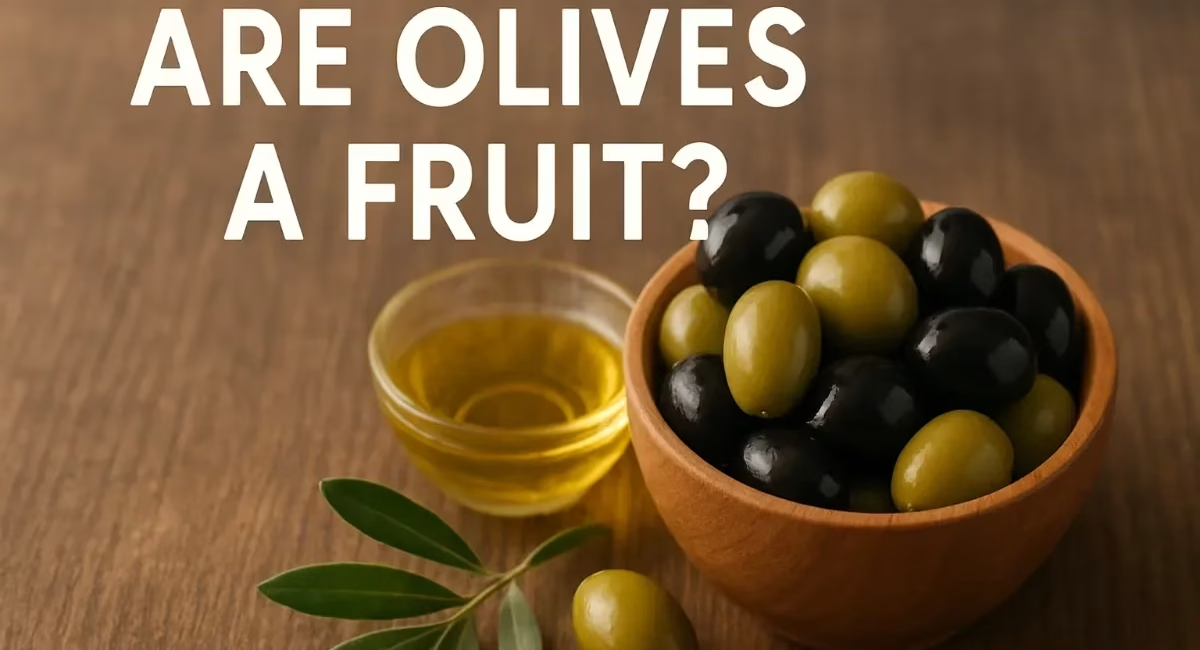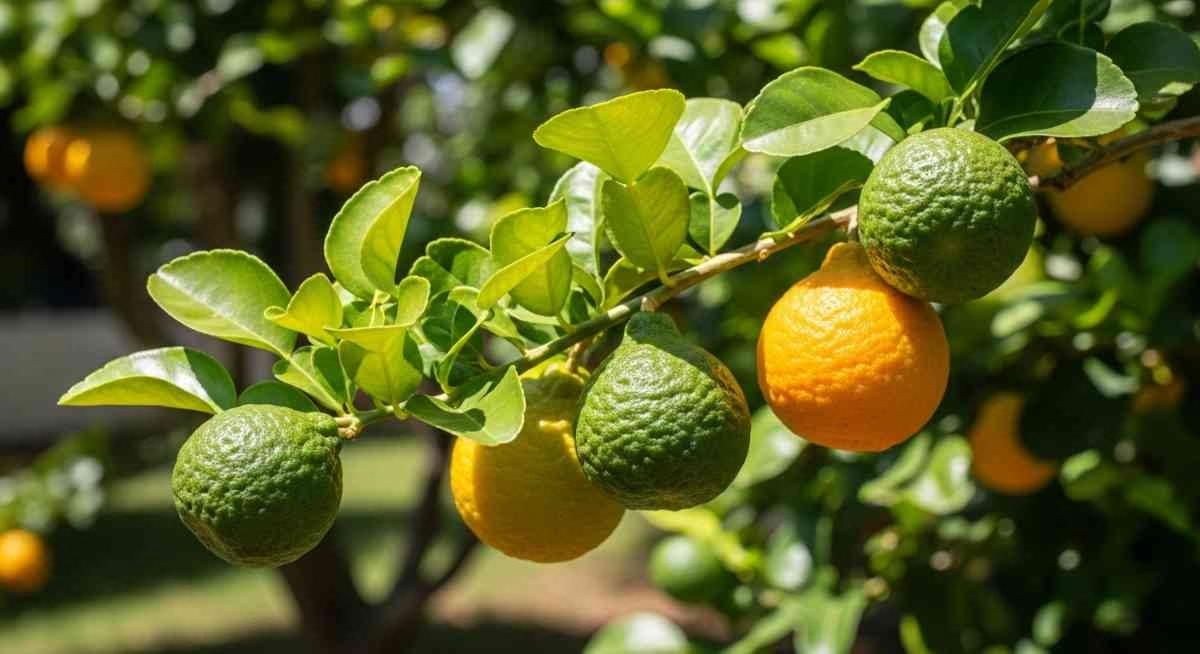Have you ever looked at olives on your pizza, in a salad, or a Mediterranean dish and wondered: are olives a fruit or a vegetable? This question confuses many because olives are mostly eaten in savory meals, unlike sweet fruits.
The clear answer is: Olives are fruits — more specifically, drupes (stone fruits) like cherries, peaches, and mangoes.
In this guide, we’ll explore why olives are considered a fruit, their history, health benefits, nutritional value, culinary uses, role in the Mediterranean diet, and FAQs.
What Makes Olives a Fruit?
Botanically, a fruit is defined as the mature ovary of a flowering plant that develops from the flower and contains seeds. By this definition:
- Olives grow from the flowers of the olive tree (Olea europaea).
- Each olive contains a pit/stone (seed) inside.
- Therefore, they fall under the drupe (stone fruit) category.
⚡ The confusion arises because olives aren’t sweet. Instead, they have a salty, bitter, and tangy taste—making people think of them as vegetables.
A Brief History & Cultural Importance of Olives
Olives are more than just food; they hold spiritual, cultural, and economic value:
- Ancient Greece – Olive trees were sacred to goddess Athena; olive branches symbolized peace and victory.
- Egyptian Civilization – Used olive oil in rituals, medicine, and cosmetics.
- Religion & Peace Symbolism – In Christianity, Judaism, and Islam, olive branches symbolize peace and purity.
- Modern Times – Olive oil is central to the Mediterranean diet, considered one of the world’s healthiest diets.
Nutritional Value of Olives (Per 100g)
Olives are small but powerful in nutrition.
| Nutrient | Amount | Benefit |
|---|---|---|
| Calories | ~115 kcal | Energy source |
| Fat | 11g (mostly monounsaturated) | Heart health |
| Fiber | 3.2g | Digestive health |
| Vitamin E | 20% DV | Antioxidant, skin protection |
| Iron | 6% DV | Supports red blood cells |
| Copper | 12% DV | Bone & nerve health |
👉 Olives are unique for being high in healthy fats and antioxidants while low in carbs.
Health Benefits of Eating Olives
Regularly eating olives (in moderation) can bring multiple health advantages:
- Supports Heart Health – Monounsaturated fats lower bad cholesterol.
- Boosts Brain Function – Healthy fats and antioxidants protect brain cells.
- Anti-Inflammatory Properties – Oleuropein reduces inflammation.
- Eye Health – Vitamin A supports vision.
- Healthy Skin & Hair – Vitamin E protects skin from UV damage.
- Cancer Protection – Polyphenols may help reduce risk factors.
Types of Olives
Olives vary in color, size, and taste depending on when they’re harvested:
- Green Olives – Harvested unripe, firm, tangy flavor.
- Black Olives – Fully ripe, mild and soft.
- Kalamata Olives – Dark purple, rich Mediterranean taste.
- Stuffed Olives – Filled with garlic, cheese, or peppers.
Olive Oil vs Whole Olives – Which Is Better?
Both are healthy, but they offer different benefits:
- Whole Olives: Contain more fiber and less fat (since they aren’t fully pressed).
- Olive Oil: Rich in concentrated healthy fats and antioxidants, widely used for cooking and dressing.
👉 For a balanced diet, enjoy both whole olives as snacks and extra virgin olive oil as part of your meals.
Olives in the Mediterranean Diet
The Mediterranean diet is one of the most recommended diets globally for heart health and longevity. Olives and olive oil play a central role in it:
- Used in salads, breads, pastas, and dips.
- Olive oil is the primary source of fat instead of butter.
- Linked to lower heart disease rates and longer life expectancy.
Culinary Uses of Olives
Olives are versatile and used across cuisines worldwide:
- Salads & Tapenade – Classic Mediterranean starters.
- Pizza & Pasta – Popular topping for flavor.
- Breads & Dips – Olive focaccia, hummus, and spreads.
- Cocktails – Famous garnish in martinis.
- Olive Oil – A kitchen essential.
Fun & Surprising Facts About Olives
- Olive trees can live for over 1,000 years.
- There are more than 1,500 olive varieties worldwide.
- Spain, Italy, and Greece are the top olive producers.
- Olive oil was once called “liquid gold” by Homer.
FAQs About Olives
1. Are olives a fruit or vegetable?
Olives are a fruit (drupe), not a vegetable.
2. Can you eat raw olives straight from the tree?
No — raw olives are bitter due to oleuropein. They must be cured or fermented before eating.
3. Are black olives healthier than green olives?
Both are healthy. Black olives have more oil, while green olives are lower in calories.
4. How many olives should I eat a day?
Moderation is key. 5–10 olives a day is a healthy portion.
5. Is olive oil healthier than other oils?
Yes, especially extra virgin olive oil, which is rich in antioxidants and heart-healthy fats.
Final Verdict: Are Olives a Fruit?
To answer the big question: Yes, olives are fruits — more specifically, stone fruits.
Although they taste savory and are used like vegetables, botanically, they belong to the fruit family. Beyond classification, olives are a superfood packed with history, flavor, and powerful health benefits.
So the next time you enjoy olives on your pizza or drizzle olive oil on your salad, remember you’re eating one of the world’s oldest and healthiest fruits.





